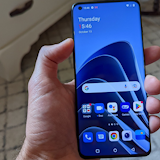 The Lumia 710 is the mid-range forerunner of Nokia’s new Windows Phone (WP) Lumia range of smartphones. The new WP focus for Nokia brings with it not only a change in overall user experience, but some unique approaches to external design and a subtle feeling of style not seen for a while in the Nokia range.
The Lumia 710 is the mid-range forerunner of Nokia’s new Windows Phone (WP) Lumia range of smartphones. The new WP focus for Nokia brings with it not only a change in overall user experience, but some unique approaches to external design and a subtle feeling of style not seen for a while in the Nokia range.
Physical Design of the Nokia Lumia 710
At first glance the 710 can come off as unremarkable in appearance. If you’re viewing one of the two tonal options – white or black – with a matching back plate then the immediate impression is of a small and standard monochrome smartphone. However, it’s important to note that the 710 has some interesting options for customization when it comes to the external casing.
While we were unfortunately only graced with a solid black unit, the 710 has a swappable rear plate. The back casing of the phone can be easily removed and replaced with another of different color. This allows users a form of customization that hasn’t really been seen before in the mobile market: the ability to customize and personalize the external appearance of their own phone.
We love the idea, as we believe that oftentimes a change is just as good as a holiday. Switching up the color scheme of your device can actually provide the impression of a new experience and can serve to spice up what you may be beginning to perceive as a stale user interface. It’s not a particularly game-changing innovation, but we are already starting to see companies like Sony follow suit in this department.
Shape-wise the 710 is fairly standard. It’s a bit wider than we’ve come to expect from a smartphone of its size but that can be forgiven when taking the price range in to account. The rubberized rear-plate also seems designed more for impact dispersal and grip rather than keeping a slim profile.
Overall the device is quite small, sporting only a 3.7 inch display. This coupled with the rubberized rear plate the Lumia 710 provides an extremely sure grip. The curved design also provides for a comfortable experience.
One point of interest is that below the screen there are three hardware buttons. Usually with modern handsets we’ll see capacitive buttons here, with perhaps only one physical button in the middle. The three hardware buttons of the Lumia 710 (Back, Home and Search) are all part of the same raised panel. This can actually create a small amount of difficulty when trying to input a command on the fly. We found that we would occasionally press to close to in-between two of the keys and hit the wrong one. It wasn’t a major issue, but we feel like the phone would have benefited by 3 totally separate buttons, rather than 3 buttons sharing one clickable panel.
 Display and UI
Display and UI
The display of the Lumia 710, while still offering a resolution of 480x800, is immediately and obviously of lesser quality than the AMOLED screen of the Lumia 800. That’s not to say that it’s a bad screen; it’s actually quite adequate. But colors just don’t share the same vibrancy as found on AMOLED variants. For a smartphone in its range it’s still a solid offering and a resolution of 480x800 is in no-way a drawback when crammed in to the smaller 3.7 inch display of the Lumia 710. Basically it’s a good screen, just not an overly impressive one.
We did find that the Windows Phone UI was a bit less immersive due to the lack of vibrancy from the 710’s non-AMOLED display. We also found that it suffered from the same cramped-feeling that we got from the Lumia 800 – the Windows Phone UI just feels like it was designed for a slightly larger screen. However, the WP user interface is still a relaxing and beautiful experience, even on a standard and small LCD like that on the Lumia 710.
The UI is the standard user interface for the Windows Phone Mango platform. WP boasts a much more unique experience than that found on the iPhone or Android devices, due to its stylish layout and intriguing integration systems.
Third party services like Facebook still manage to give off a very Windows Phone-esque feel when you’re using them. This is because that same WP font is implemented, as well as a similar style of picture and text layout is generally kept across the entire user experience.
Users also have the option of pinning a specific website, or even a page within said website straight to the Home Screen as if it were just another Live Tile. This, coupled with the font and layout retention mentioned before, gives the feeling that you’re never really leaving the Windows Phone system. Rather, the user is left with the impression of a uniformed and complete experience instead of a haphazardly thrown-together mess of separate functionalities.
Notifications are handled similarly to the Android and iOS (iOS 5 or later) operating systems. A drop-down bar appears whenever a new notification is received. This bar can be tapped on to reveal the notification, or ignored and addressed later.
Themes and customization is one area in which Windows Phone seems to have earned itself an ill-deserved shady reputation. Many users assume, incorrectly, that the WP platform suffers from a crippling lack of options for personalization. This is most likely because that WP, unlike Android and iOS, does not allow users the option of implementing their own background. Instead, WP uses a color theme system.
Color themes come in two varieties: background and foreground. For the background there are the two options of white and black, or “light” and “dark”. The foreground options refer to things like Live Tiles and the Notification bar. There are a variety of colors to choose from. It sounds restrictive, but the first time we tried out this system we actually found it to be a pleasant change of pace. Simply messing around with different background and color combinations actually provides a surprisingly diverse range of motifs, each of which adds its own kind of character to the interface. It also works fantastically with the idea of changeable rear-plates, as users can easily customize their on-screen aesthetics to match or compliment that of their exterior case.
 Camera
Camera
The 5MP shooter on the Nokia Lumia 710 is quite passable. As far as 5MP smartphone cameras go we found it to be somewhat above par, but in no way incredibly so. As can really be expected from a mid-ranged device it took good photos in well-lit areas and started to lose quality as it was exposed to more and more dimly-lit situations. We did find that photos taken with flash were of a higher quality than we expected, but once again it wasn’t a high-point of the overall experience.
For video-capture we’d give the Lumia 710 a solid ‘OK’. Once again in well-lit situations it’s capable of turning out decent image quality, but anything darker than a mildly overcast day and it begins to lose image clarity. Auto-focus is also affected in dimmer situations, causing the camera to spend too much time adjusting to new angles or light levels.
Syncing videos and pictures to a desktop or computer is a bit restrictive. Much like with the relationship between an iPhone and iTunes, Windows Phones have to be synced via the Microsoft Zune Player application. It’s not a difficult experience and less-experienced users will probably find it helpful. But anyone with a bit more experience with file access and transferal may find the whole process limiting. However, it’s no more limiting than some of the other mobile options out there and definitely shouldn’t prove an issue to the greater majority of users.
 Music on the Nokia Lumia 710
Music on the Nokia Lumia 710
Music is one area where Nokia Windows Phones actually manage to really set themselves apart from other Windows Phone devices. The Nokia Music app offers a unique music experience for its users, namely through the “Gigs” section.
With Nokia Music, users can look up and view upcoming gigs in their immediate vicinity. Right now the acts that are usually included tend to be on the larger-side, but you still get the odd small event thrown in there and we actually noticed an increase in postings since we reviewed the Lumia 800 only a few weeks ago. This gigs section isn’t going to be for everyone, but we honestly love this kind of integration. Making live music gigs more openly available is a great way to get users to go out and experience new social events. We actually found ourselves browsing the gigs section on more than one occasion and taking down mental notes for future performances in our area.
Other than Gigs Nokia Music is quite similar to the standard WP music player; it’s a solid portable music service that can lag a little at times when it comes to switching between menus, but overall works well and plays music smoothly. We appreciated the visuals as well. It’s great to have whatever artist is playing pop up as your lock screen, it adds an element of personalization that changes depending on what mood you’re in and thus what kind of music you’re playing.
One great piece of functionality for Windows Phones is Zune Pass support. Zune Pass is the subscription-based service offered by Microsoft. Basically users pay a monthly fee and are granted unlimited downloads from Microsoft’s Zune store. These downloaded albums or songs can be installed on either 5 or 7 devices (depending on when you signed up). The catch is that if you ever cancel your subscription they will immediately stop working.
However, for your subscription fee of between $12 and $15 (prices vary depending on region and with time) you’ll also be given a free downloadable album that’s yours to keep forever each month. So basically for the price of one album per month you get one album per month, plus unlimited access to millions of songs as long as your subscription is still valid. It’s a smooth and easy-to-use system and, so far, it’s one of the better streaming services that we’ve sampled on the web. We wouldn’t exactly recommend it for anyone who doesn’t have a Windows Phone, as they wouldn’t be able to take their music with them. However, with Windows Phones having Zune Pass compatibility it suddenly upgrades from a good service to a great one in our books.
 Apps and Gaming
Apps and Gaming
As usual apps and gaming on the Windows Phone platform was a little meagre. Being a new operating system (OS), Windows Phone is still in the process of building a solid base of app developers. That being said there is still a large number of games and apps to choose from, you just probably won’t find some of the bigger titles that have become cross-platform between Android and iOS.
One thing that Windows Phone does have going for it when it comes to apps and games is its fantastic try before you buy system. Most titles have a “Try” button sitting next to the “Buy” option. Hitting “Try” will usually give you access to either a demo version of the program, or the full program but with a limited timeframe in which you can use it. What’s great about this is that, say you download a game and spend a couple of hours playing it, if you decide at the end of the trial period that you want it all you have to hit is “buy” and you can usually continue on your way. You won’t have to start again and you generally won’t even have to download anything extra. It’s a solid system that takes a lot of the guess-work that is usually associated with purchasing new games and apps.
Of course the pricing in the Windows Phone Marketplace tends to be a bit higher – around $3.49 for the average title. But we found that the added surety given by the trial system allowed us to decide for sure whether or not we really thought each product was worth what was being asked, making for an overall satisfied experience on our behalf.
 Keyboard and Browser
Keyboard and Browser
Browsing in Windows Phone is smooth and responsive. The Lumia 710 handles pinch-to-zoom commands quickly and keeps its percentage of screen-width cover constant when switching between portrait and landscape modes.
We’ve become accustomed to larger screens lately and we have to say that switching back to browsing on a 3.7 inch is difficult. A larger screen means more room for text and images, as well as being easier for typing. Even those of us with better vision had trouble reading the captions below images when the 710 was kept in portrait mode, but when we switched to landscape there were no problems.
They keyboard was equally responsive and didn’t once manage to raise our ire. We found the auto-correct function to be satisfactorily intuitive and the software keypad managed textual input at high speeds. Once again in portrait mode we had a bit of trouble typing, as our large fingers felt cramped on the 3.7 inch display. But in landscape mode things were much easier and we could type away merrily as quickly as we pleased.
 The WhistleOut Opinion
The WhistleOut Opinion
Overall we were pleased with the performance of the Nokia Lumia 710. For a mid-range device it was fast, responsive, smooth and as always the Windows Phone UI offered a pleasant and stylish experience.
The camera was at times lacklustre but we didn’t feel that it fell short of the mark for where it sits in the overall smartphone market.
We love the idea of the interchangeable rear-casing for switching up your style and personalizing your device just that little bit more. It’s a fantastic premise that we hope to see implemented on more devices in the future and, for a mid-ranger, it should be enough of a feature to make the Lumia 710 stand out more prominently against its competitors.
If you’re after a solid mid-range smartphone then we definitely suggest giving the Lumia 710 a serious look-over during your comparison process. It’s no top-end device, but it certainly offers a solid and smooth experience for the casual smartphone user.



Related Articles
Related Topics
Nokia Windows Phone 7 Microsoft Windows Phone Windows Phone Mango Review Nokia LumiaPopular Topics
Android Apple iPhone Samsung Google iOS Cell phone plans Rogers Telus BellFind Better Phones and Plans
Hundreds of cell phone plans unpacked. All the facts. No surprises.






































